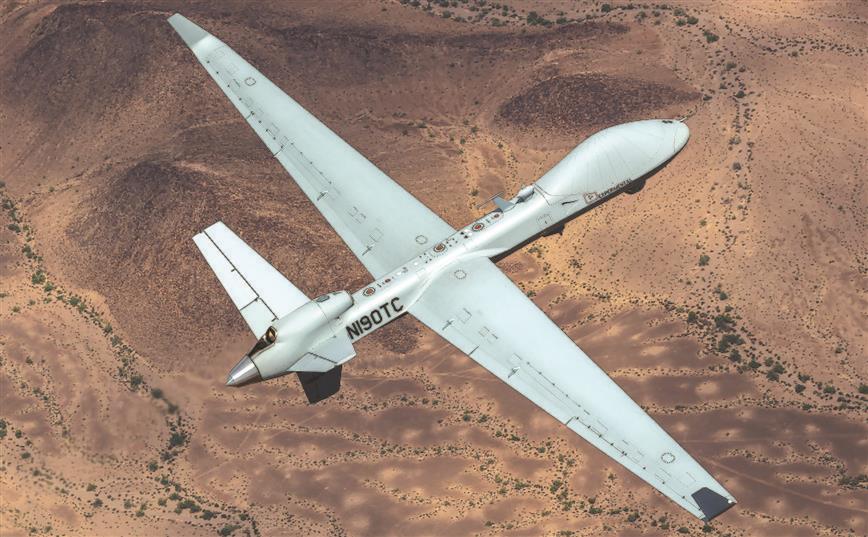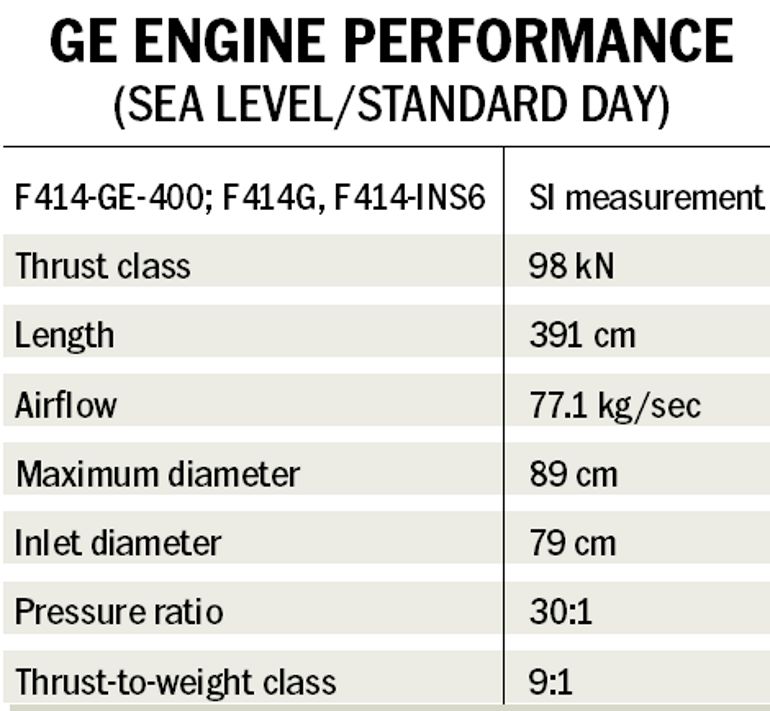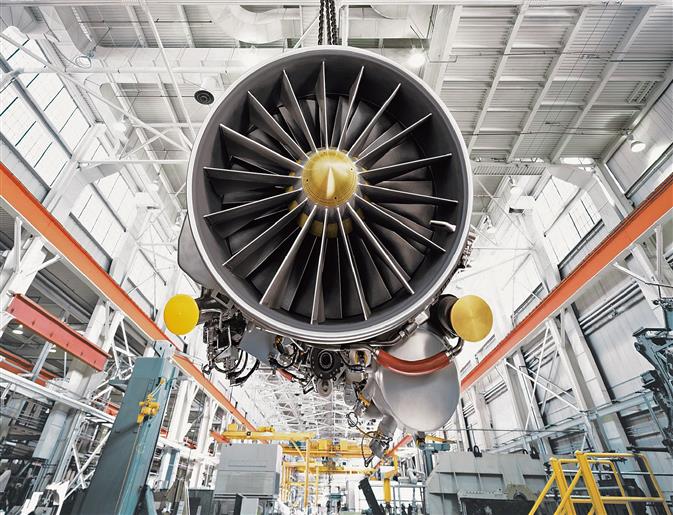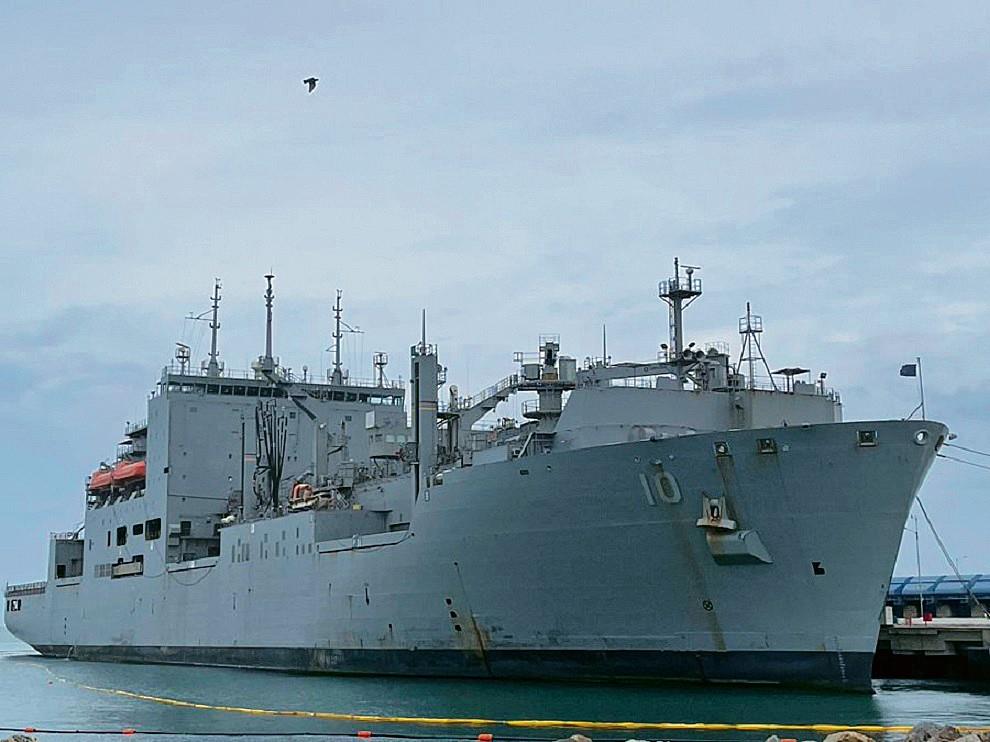
Ajay Banerjee
After the United States offered India cutting-edge, elusive and restricted technologies on making aero-engines for fighter jets, armed drones, semiconductors, space-based radars, quantum computing and 6G communications, New Delhi has made a strategic shift — away from being Russia-centric or France-centric — to access such technologies. Aero-engines and armed drones are military-use equipment. The other technologies are dual-use, which aid critical applications of modern-day militaries during peace and conflict.

The bilateral meeting between Prime Minister Narendra Modi and US President Joe Biden in Washington DC on June 22 had unprecedented announcements on technology sharing. From New Delhi’s point of view, it would be imprudent to term the shift pro-American, or ‘moving away’ from Russia, its longstanding ally. For now, it’s just about getting partners for the elusive military technology as threats from China rise.
In the past 60 years, India has licensed-produced military equipment of Russian/Soviet Union parentage, including T-90 tanks, Sukhoi 30 MKI and MiG-21 jets. India and Russia co-produced the BrahMos missile. Moscow handheld India in the nuclear submarine programme; it converted a warship into an aircraft carrier, INS Vikramaditya, and supplied the S400 air-defence missile system.
Similarly, France joined hands with India to make the Scorpene class submarines in India. It sold the cutting-edge Rafale jets in 2019 and in 1980s, provided the Mirage 2000 jets, the latest at the time.

Sweden-based think tank Stockholm International Peace Research Institute in March released its assessment for a five-year period (2018-2022). It said: “Russia remains the largest supplier of major arms and supplied 45 per cent of all Indian imports.” France and the US were second and third with 29 per cent and 11 per cent share, respectively. The report compared the five-year period with the previous five-year period to show that Russia’s share in India’s market was declining.
New Delhi was officially ‘non-aligned’ during the Cold War (1945-1991) but was an ally of the Soviet Union, including signing in August 1971 the Indo-Soviet Treaty of Peace, Friendship and Cooperation. It allowed Soviet Union to intervene to stall a possible US strike during the 1971 Indo-Pak war.
The India-US strategic relations took baby steps after the Cold War. In 1995, the two agreed on having ‘defence relations’. Ten years later, in 2005, the two signed a ‘framework of defence relationship’. A buyer-seller relationship emerged. India sourced planes like the C-17, C-130 and the Boeing P8I maritime reconnaissance planes. Helicopters included the Apache, the Chinook and the submarine-hunting MH 60R. There was no technology transfer involved.
The India-US technology shift was described thus by President Biden at the joint press conference: “We have made critical and emerging technologies the pillar of our next-generation partnership.” Biden is not off the mark, as over the next three decades, US-origin technology will be a part and parcel of India’s war-fighting effort.

US-origin engines
US aerospace giant General Electric (GE) and Hindustan Aeronautics Limited (HAL) will produce the GE-F414 engines for fighter jets in India. The US okaying technology transfer of 80 per cent of the engine means a geo-strategic shift is set to unfold.
US-origin engines could be put on 440 fighter jets scheduled to be made in India over the next two decades. This includes the 83 Tejas Mark 1A, the production of which starts in February using the already contracted General Electric engine F404.
The next lot of Indian jets will get the higher-powered F414 engine with a 98 kilo newton (kN) thrust. The F414 engine is good for 130 of the Tejas Mark 2 jets and 100 of the twin-engine deck-based fighters (TEDBF) for the Indian Navy. Besides this, the 126 Indian Advanced Medium Combat Aircraft (AMCA) are planned in two phases. The F414 engine is compatible with the first lot of 40 AMCAs. For the later version, GE has submitted a proposal of co-developing and co-manufacturing a higher-powered 110 kilo newton thrust engine, it is learnt.
The Tejas Mark 1 — 40 jets have been inducted in the Indian Air Force — is powered by GE F404. The transfer of technology includes critical and restricted technologies like crystal blade coating, laser drilling and polymers, to name a few. The US, France, UK and Russia have these elusive technologies. “India will get technology never transferred to any country,” said a top functionary in the defence establishment.
Access to armed drones
Some three years ago, in August 2020, India, during the military standoff with China along the Line of Actual Control (LAC), leased two MQ-9A surveillance drones from the US company General Atomics. The images and videos beamed live to controllers on the ground provided inputs at a much lesser cost than a manned surveillance plane.
Now, India is ready to induct 31 armed drones, the MQ-9B, made by General Atomics. The US and its allies like the UK, Japan, Canada or Australia have these.
Former Deputy Chief of the Navy, Vice Admiral Ravneet Singh (retd), says: “The MQ-9A increased our maritime domain awareness. The MQ-9B has better sensors, range, endurance, electronic surveillance and can carry weapons.”
The India-US joint statement said: “MQ-9Bs will be assembled in India. General Atomics will also establish a comprehensive global MRO (maintenance, repair and operations) facility in India to support India’s long-term goals to boost indigenous defence capabilities”. That means, similar drones of other countries can undergo repair and overhaul here. Indian-origin Vivek Lall, Chief Executive of General Atomics Global Corporation, was leading this effort of getting India on board.
The MQ-9B is classified as a category-1 equipment under the Missile Technology Control Regime (MTCR). It can be used to target enemy positions on ground, warships at sea, submarines, airbases and even small targets like planes, besides providing 24×7 surveillance capability.
At sea, the drones buttress the Navy’s fleet of P8I surveillance planes. “The drones can pick up signals from existing ‘sonobuoys’ at sea and remain focussed on target for longer periods,” says Vice Admiral Ravneet Singh. On land, the Himalayas create a boundary between India and China. Vast areas that are physically inaccessible will be monitored by the drones.

US warship repairs
In August last year, US Navy Ship (USNS) Charles Drew arrived at L&T’s shipyard at Kattupalli, Chennai, for repairs, the first ever repair of a US Navy ship in India.
The Ministry of Defence said it “assumes special significance in the strategic partnership and marks the beginning of a new chapter for deeper engagements”.
Now, apart from L&T, the US Navy is finalising ship repair agreements with Mazagon Docks Limited, Mumbai, and Goa Shipyard. “These will allow mid-voyage US Navy ships to undergo service and repair, facilitating cost-effective and (be) time-saving,” a fact sheet issued by the White House said. The Indo-US Defence Industrial Roadmap looks to work together for the creation of logistic, repair and maintenance infrastructure for aircraft and vessels in India.
Space missions
In April 2024, it will be 40 years since Squadron Leader Rakesh Sharma’s space flight onboard a Russian spacecraft. The year will mark a major transition for India-US space activities. NASA and ISRO have announced a joint manned mission to the International Space Station. Also, the NASA-ISRO Synthetic Aperture Radar (NISAR) satellite is to be launched in 2024.
The radar of the satellite was delivered to ISRO’s UR Rao Satellite Centre in Bengaluru in March this year. ISRO has identified a range of applications of relevance to India, including monitoring of snow and glacier studies, coastal and ocean studies. India’s boundary with China and a large part of the boundary with Pakistan are snow-bound.
India and USA also have a Space Situational Awareness (SSA) arrangement. The India-US Civil Space Joint Working Group spans cutting-edge earth observation capabilities to interplanetary exploration. India is now a signatory to the Artemis Accords and joins 26 countries committed to the peaceful, sustainable and transparent exploration of Moon, Mars, and beyond. Another $318 million investment has been made to construct a Laser Interferometer Gravitational Wave Observatory in India, which will work in tandem with US, Europe and Japan.
Semiconductors, the holy grail
Semiconductors are used by the military for avionics on warships, planes, guiding missiles, computing and communications, among other applications. SCL-Mohali, BEL and HAL cater to the defence and space sectors. Capacities are limited and technology has overtaken these public sector entities.
The Modi-Biden meet announced a $825 million investment by Micron Technology, another $400 million by Applied Materials, while Lam Research will train 60,000 engineers. The new ecosystem is expected to spill over into the military and strategic domains in terms of knowledge. Union Minister of State for Electronics and IT Rajeev Chandrasekhar termed these “significant and meaningful milestones”.
Crucial information sharing
The US and India are working to strengthen undersea domain awareness cooperation. For the first time, Indian liaison officers will be placed in three US commands — deepening critical information sharing. The two sides are in talks for a Security of Supply Arrangement and Reciprocal Defence Procurement Arrangement that will enable the supply of defence goods in the event of unanticipated supply chain disruptions.
The defence industries are enabled for co-production of advanced systems as well as collaborative research, testing and prototyping of the technologies that will determine the future of military power.
